View in other NatureServe Network Field Guides
NatureServe
Montana
Utah
Wyoming
Idaho
Wisconsin
British Columbia
South Carolina
Yukon
California
New York
Orange-banded Arion - Arion fasciatus
Other Names:
Arion circumscriptus, Arion fuscus, Limax fasciatus
General Description
A small to medium-sized slug, reaching 25 to 45 mm extended. The dorsal base color is gray to yellowish on the mantle, back, and sides, tentacles dark. The body is bell-shaped when contracted. The mantle is granulose, about 1/3 the body length, the same color as the back and lacking speckling; a pair of brownish lateral bands is present close to the mantle margin. The pneumostome is in the anterior half of the mantle on the right side, posterior to the mantle cleft. The tail has a pair of brownish or darker gray lateral bands extending to near the posterior end; the sides paler below the bands than above. The tail also lacks a mid-dorsal keel and is covered dorsally with a series of rows of fine tubercles; the row down the dorsal midline forms a narrow light stripe. The sole is quite pale, undivided (lacking two longitudinal furrows); the mucous is clear and not sticky (Hendricks 2012, Burke 2013). A recent genetic study suggests A. circumscriptus may be a variety of this species (Geenen et al. 2006). Internal anatomy is described by Pilsbry (1948), Forsyth (2004), and Grimm et al. (2009).
Diagnostic Characteristics
Arion lack an elevated visceral hump, possess a mantle about 1/3 the length of the animal with the pneumostome in the anterior half of the mantle, have an undivided foot, lack a dorsal keel on the tail, have a relatively broad tail covered with rows of prominent turbercles and with a caudal mucous pit at the tip where the pedal furrows meet. A. subfuscus differs from other members of the genus by a combination of it's small to medium size, grayish color with a pale orangish tinge, distinct brownish bands on low on mantle and sides of tail, lack of mantle speckles, pale sole, and production of a clear mucous.
Species Range
Montana Range
Range Descriptions
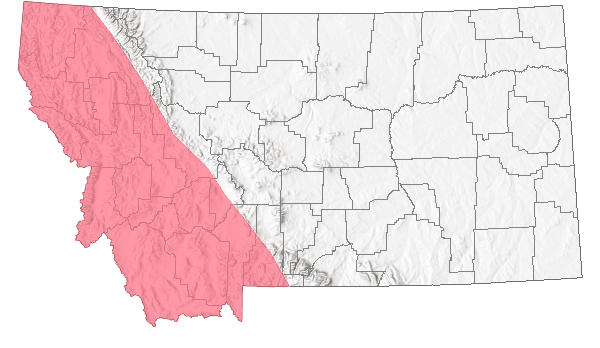
 Non-native
Non-native
Range Comments
Native to Europe; introduced to North America. In Montana, reported from Lincoln, Missoula, and Ravalli counties, all west of the Continental Divide. Elevation range is 992 to 1324 m (3255 to 4345 ft). Not reported in Montana prior to 2006, but with additional surveys in appropriate sites it will probably prove to be one of the more widely distributed Arion species in areas of human activity west of the Continental Divide. As many as 110 individuals were reported at one Lincoln County site in early October (Hendricks 2012).
Observations in Montana Natural Heritage Program Database
Number of Observations: 8
(Click on the following maps and charts to see full sized version)
Map Help and Descriptions
Relative Density
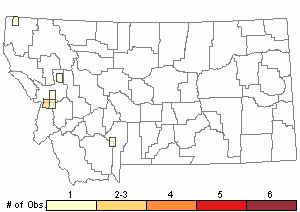
Recency
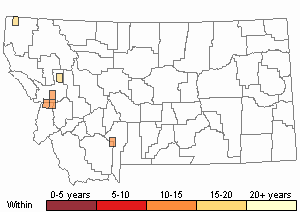

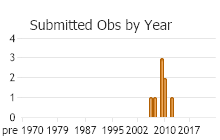
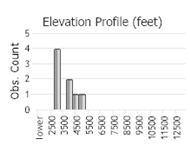 (Observations spanning multiple months or years are excluded from time charts)
(Observations spanning multiple months or years are excluded from time charts)
Habitat
Occupies moist to wet sites (stream-sides, marshy areas) within forested or shrubby locations, usually near areas of human activity, such as campgrounds, gardens, and other disturbed sites. Canopy includes Engelmann spruce, Douglas-fir, lodgepole pine, ponderosa pine, western larch, black cottonwood, paper birch; secondary canopy species include alder and willow. Most often found under woody debris (Hendricks 2012).
References
- Literature Cited AboveLegend:
 View Online Publication
View Online Publication Burke, T. E. 2013. Land snails and slugs of the Pacific Northwest. Corvallis, OR: Oregon State University Press. 344 p.
Burke, T. E. 2013. Land snails and slugs of the Pacific Northwest. Corvallis, OR: Oregon State University Press. 344 p. Forsyth, R.G. 2004. Land snails of British Columbia. Royal British Columbia Museum: Victoria, British Columbia, Canada. 188 pp.
Forsyth, R.G. 2004. Land snails of British Columbia. Royal British Columbia Museum: Victoria, British Columbia, Canada. 188 pp. Geenen, S., K. Jordaens, and T. Backeljau. 2006. Molecular systematics of the Carinarion complex (Mollusca: Gastropoda: Pulmonata): a taxanomic riddle caused by a mixed breeding system. Biological Journal of the Linnean Society 89:589-604.
Geenen, S., K. Jordaens, and T. Backeljau. 2006. Molecular systematics of the Carinarion complex (Mollusca: Gastropoda: Pulmonata): a taxanomic riddle caused by a mixed breeding system. Biological Journal of the Linnean Society 89:589-604. Grimm, F.W., R.G. Forsyth, F.W. Schueler, and A. Karstad. 2009. Identifying land snails and slugs in Canada: introduced species and native genera. Canadian Food Inspection Agency, Ottawa, ON. 168 pp.
Grimm, F.W., R.G. Forsyth, F.W. Schueler, and A. Karstad. 2009. Identifying land snails and slugs in Canada: introduced species and native genera. Canadian Food Inspection Agency, Ottawa, ON. 168 pp. Hendricks, P. 2012. A Guide to the Land Snails and Slugs of Montana. A report to the U.S. Forest Service - Region 1. Montana Natural Heritage Program, Helena, MT. vii + 187 pp. plus appendices.
Hendricks, P. 2012. A Guide to the Land Snails and Slugs of Montana. A report to the U.S. Forest Service - Region 1. Montana Natural Heritage Program, Helena, MT. vii + 187 pp. plus appendices. Pilsbry, H.A. 1948. Land Mollusca of North America (north of Mexico), Volume II Part 2. The Academy of Natural Sciences of Philadelphia Monograph Number 2(2): 521-1113.
Pilsbry, H.A. 1948. Land Mollusca of North America (north of Mexico), Volume II Part 2. The Academy of Natural Sciences of Philadelphia Monograph Number 2(2): 521-1113.
- Web Search Engines for Articles on "Orange-banded Arion"
- Additional Sources of Information Related to "Snails / Slugs"





